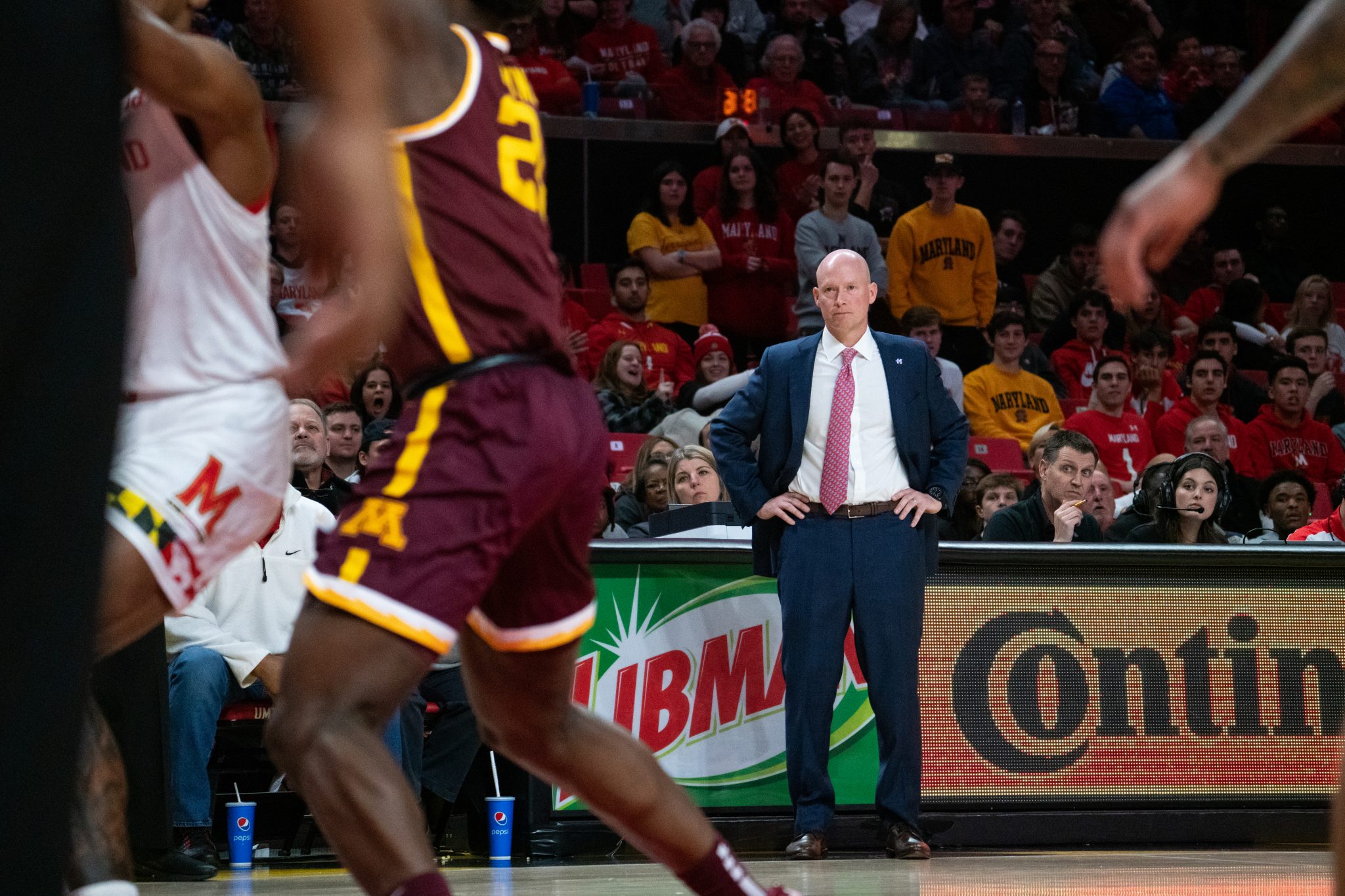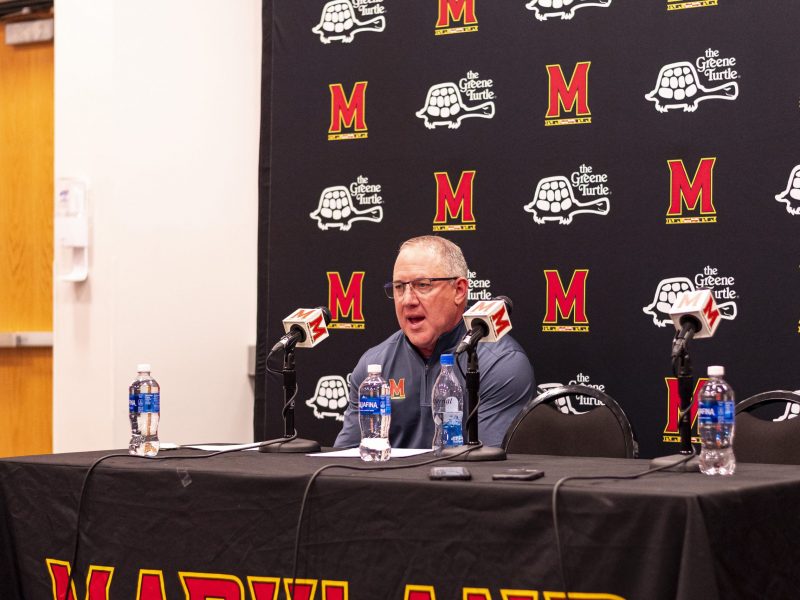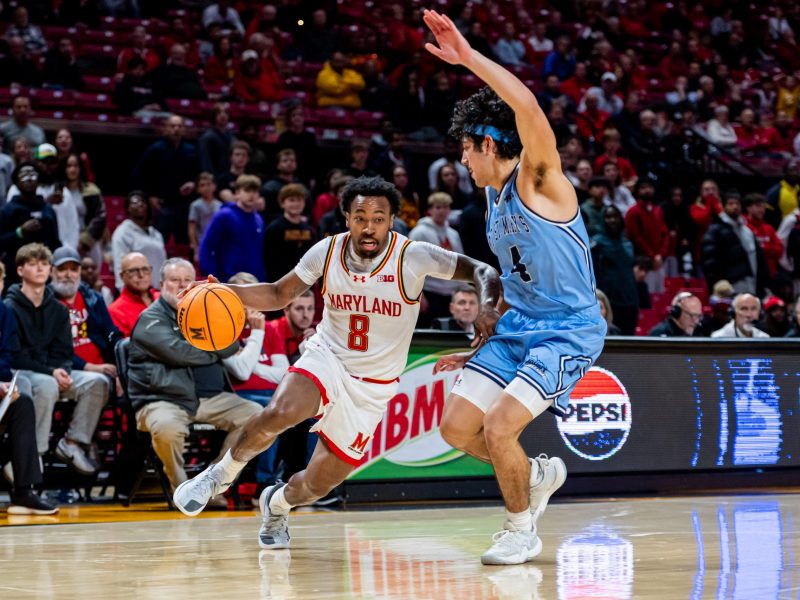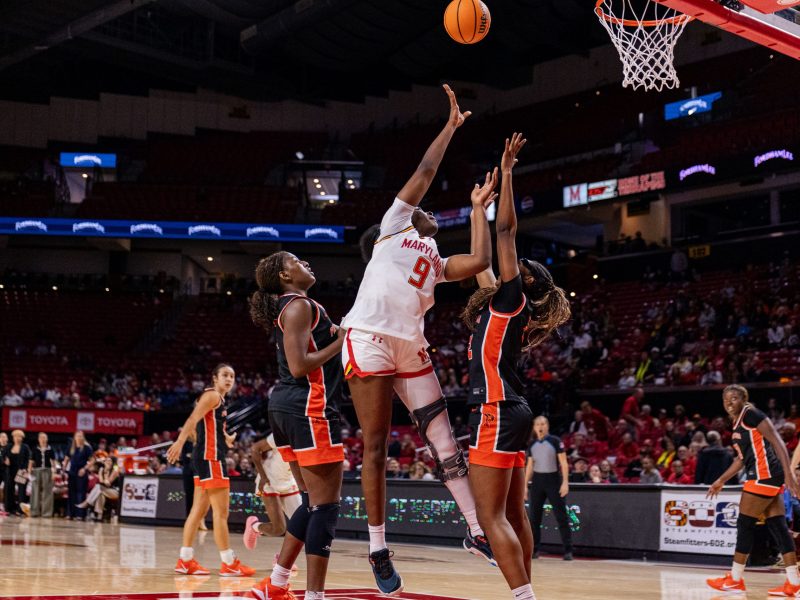Kevin Willard’s journey to the University of Maryland began as a name amid several in a rigorous coaching search. The Terps chose him and the Seton Hall transplant found the reins, brought in several impactful transfers, retained key players and established a swift recruiting mark.
With that, Willard brought immediate success: An 8-0 start to the season and an eventual 21-12 mark that earned Maryland an at-large NCAA Tournament bid in his first season.
Despite losing three of its last four games before the NCAA Tournament, No. 8 seed Maryland managed to send No. 9 seed West Virginia home in a narrow win in Birmingham, Alabama.
But the next round’s opponent, No. 1 seed Alabama, held a de-facto home-court and size advantage — the Terps rarely stood a chance of threatening the upset outside of the early minutes.
Walking off the press conference stage after a Round of 32 loss against the Crimson Tide, Willard concluded a season in which he re-established a winning tone for Maryland men’s basketball in less than a year despite a roster that often showed its limitations, ones the coach will look to fix through transfers and his first freshman class.
“It’s a good first step,” Willard said. “I mean, we have a lot more steps that we need to take as a program, and we will get there … if you had told me I would be playing in the Second Round inheriting five guys on the roster, I would have told you you’re nuts.”
The quick turnaround from last season’s dismal 15-17 campaign centered around two players: an emergent Julian Reese, who improved across the statistical board this season, and All-Big Ten Second Team point guard Jahmir Young, one of Willard’s first transfer portal pickups. The two helped boost a squad previously projected to finish in the bottom half of the Big Ten.
Initial success from Donta Scott, who shed weight in the previous offseason, buoyed Maryland’s explosive offensive outings through a non-conference schedule that featured an increasingly impressive win over Final Four team Miami and Saint Louis.
[Tony Skinn departs Maryland men’s basketball to become head coach at George Mason]
The Terps needed a shot in the final minute to put away Illinois in the Big Ten season-opener, but the victory finished their ideal start.
Then the growing pains began.
Three consecutive losses against Wisconsin, Tennessee and UCLA — all away from the Xfinity Center — knocked Maryland out of the AP Poll and ignited a trend of poor road play that would notably persist in other quizzical losses in overtime against Nebraska and in a 35-point blowout to Michigan.
In the home match-ups against the Wolverines and Cornhuskers, the Terps performed significantly better, notching wins by six and 19 points respectively. On the other hand, a Rutgers team that would later miss the NCAA tournament and lose in the first round of the National Invitational Tournament held Maryland to just 50 points in another road loss.
Maryland went just 2-9 on the road for the season but its 16-1 record at home featured impressive triumphs. Wins against ranked Indiana, Northwestern and an upset of then-top-five ranked Purdue kept Willard’s squad in the national spotlight.
Much of Maryland’s success could be attributed to the Big Ten’s fourth-ranked scoring defense, which allowed 63.5 points per game for the season. After Maryland gave up 81 points in a loss to Iowa on Jan. 15, the Terps went on a 12-game streak of holding opponents to 70 points or less.
“We pride ourselves on defense,” Scott said after Maryland limited Minnesota to just 54 points in the first round of the Big Ten Tournament on March 9. “Defense wins games, we really get out each other after each other when we practice and we take that mindset into the game. Once we lock in [on] defense, not really much you can do.”
But in the end, an overperforming Maryland team faded in both phases. Even though the Terps held the Crimson Tide to under 40 percent from the field, they allowed their foes to shoot 28 free throws.
[Jahmir Young will return to Maryland men’s basketball next season]
Willard’s offense couldn’t keep pace and shot only 1-of-8 from three, a season-low in attempts and makes as Maryland scored just 51 points. The long-range performance reiterated an area the Terps never stood out in, ranking just eighth in the Big Ten from behind the arc.
Alabama lost to San Diego State in the next round. The next phase began for Maryland men’s basketball, and it’ll be busy.
Several key decisions this offseason could define year two of the Willard era. Young, Scott and Hakim Hart all have extra seasons of eligibility that they could utilize.
As the offseason progressed, Young chose to stay for his extra season of eligibility. Hart entered the transfer portal and declared for the NBA Draft while maintaining his eligibility. Scott hasn’t made a decision yet.
Maryland could lose up to three starters from the 2022-23 campaign if Hart and Scott leave after Don Carey graduated. Incoming recruits and transfers could soften the impact of those losses.
The Terps have reportedly been in contact with Towson guard Nick Timberlake, Tulsa forward Bryant Selebangue, Washington State guard TJ Bamba and Temple guard Damian Dunn.
Three four-star recruits — DeShawn Harris-Smith, Jamie Kaiser, Jahnathan Lamothe — and three-star seven-footer Braden Pierce headline Maryland’s 2023 recruiting class. Willard’s 2023 class ranks 16th in the nation, their highest ranking since the 2018 class that featured Jalen Smith, Aaron Wiggins and Eric Ayala.
The Terps will also lose assistant coach Tony Skinn, a key recruiter who left to become head coach at his alma mater, George Mason.
The change forecasts a busy offseason for Willard and his staff as they try to improve off a winning season that helped the Terps recover from the chaos of former coach Mark Turgeon’s departure.
The coach’s first season in College Park served as a definitive building block that could indicate further success.



